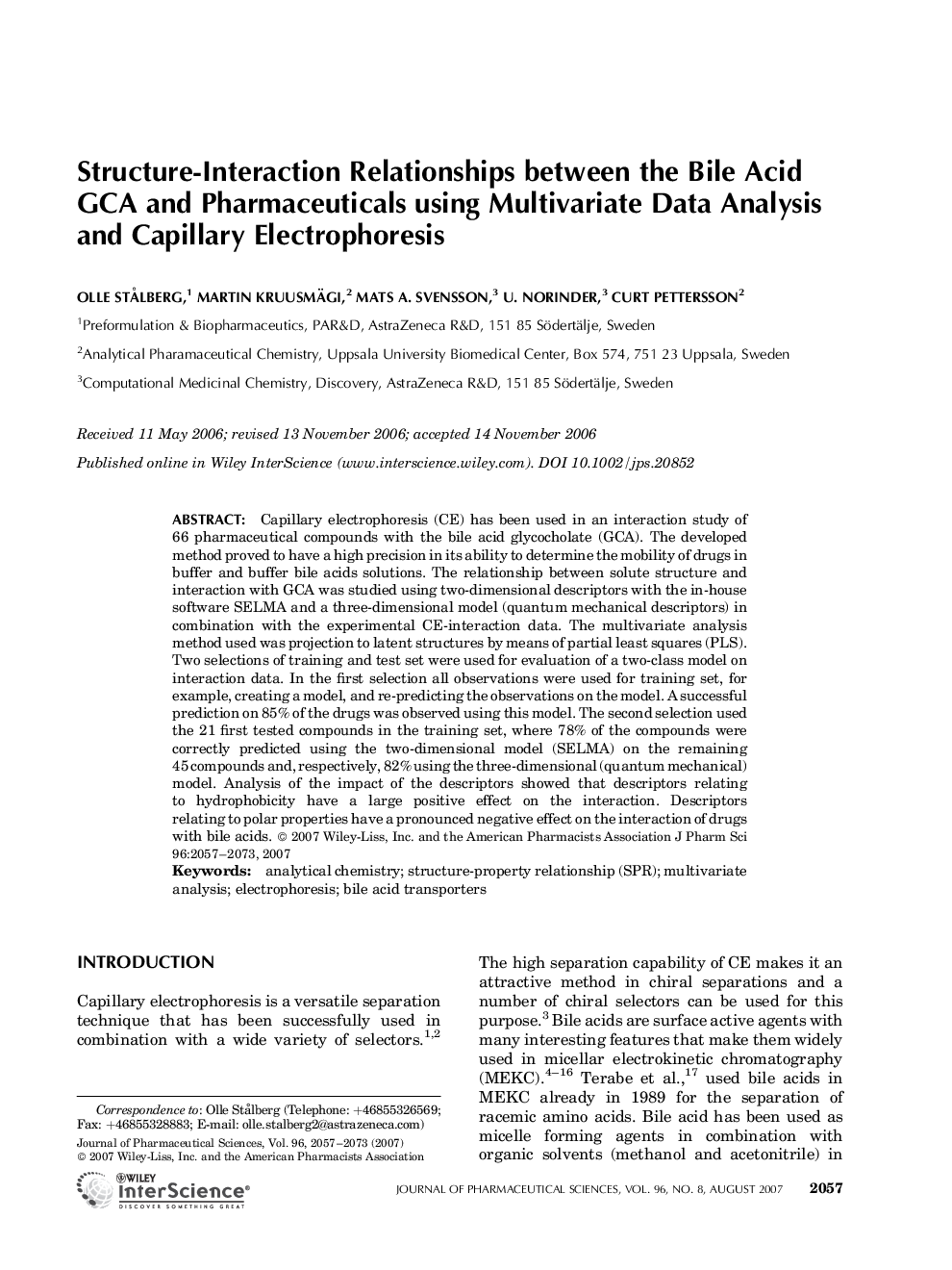| Article ID | Journal | Published Year | Pages | File Type |
|---|---|---|---|---|
| 2486116 | Journal of Pharmaceutical Sciences | 2007 | 17 Pages |
Abstract
Capillary electrophoresis (CE) has been used in an interaction study of 66 pharmaceutical compounds with the bile acid glycocholate (GCA). The developed method proved to have a high precision in its ability to determine the mobility of drugs in buffer and buffer bile acids solutions. The relationship between solute structure and interaction with GCA was studied using twoâdimensional descriptors with the inâhouse software SELMA and a threeâdimensional model (quantum mechanical descriptors) in combination with the experimental CEâinteraction data. The multivariate analysis method used was projection to latent structures by means of partial least squares (PLS). Two selections of training and test set were used for evaluation of a twoâclass model on interaction data. In the first selection all observations were used for training set, for example, creating a model, and reâpredicting the observations on the model. A successful prediction on 85% of the drugs was observed using this model. The second selection used the 21 first tested compounds in the training set, where 78% of the compounds were correctly predicted using the twoâdimensional model (SELMA) on the remaining 45 compounds and, respectively, 82% using the threeâdimensional (quantum mechanical) model. Analysis of the impact of the descriptors showed that descriptors relating to hydrophobicity have a large positive effect on the interaction. Descriptors relating to polar properties have a pronounced negative effect on the interaction of drugs with bile acids. © 2007 WileyâLiss, Inc. and the American Pharmacists Association J Pharm Sci 96:2057-2073, 2007
Related Topics
Health Sciences
Pharmacology, Toxicology and Pharmaceutical Science
Drug Discovery
Authors
Olle StÃ¥lberg, Martin Kruusmägi, Mats A. Svensson, U. Norinder, Curt Pettersson,
